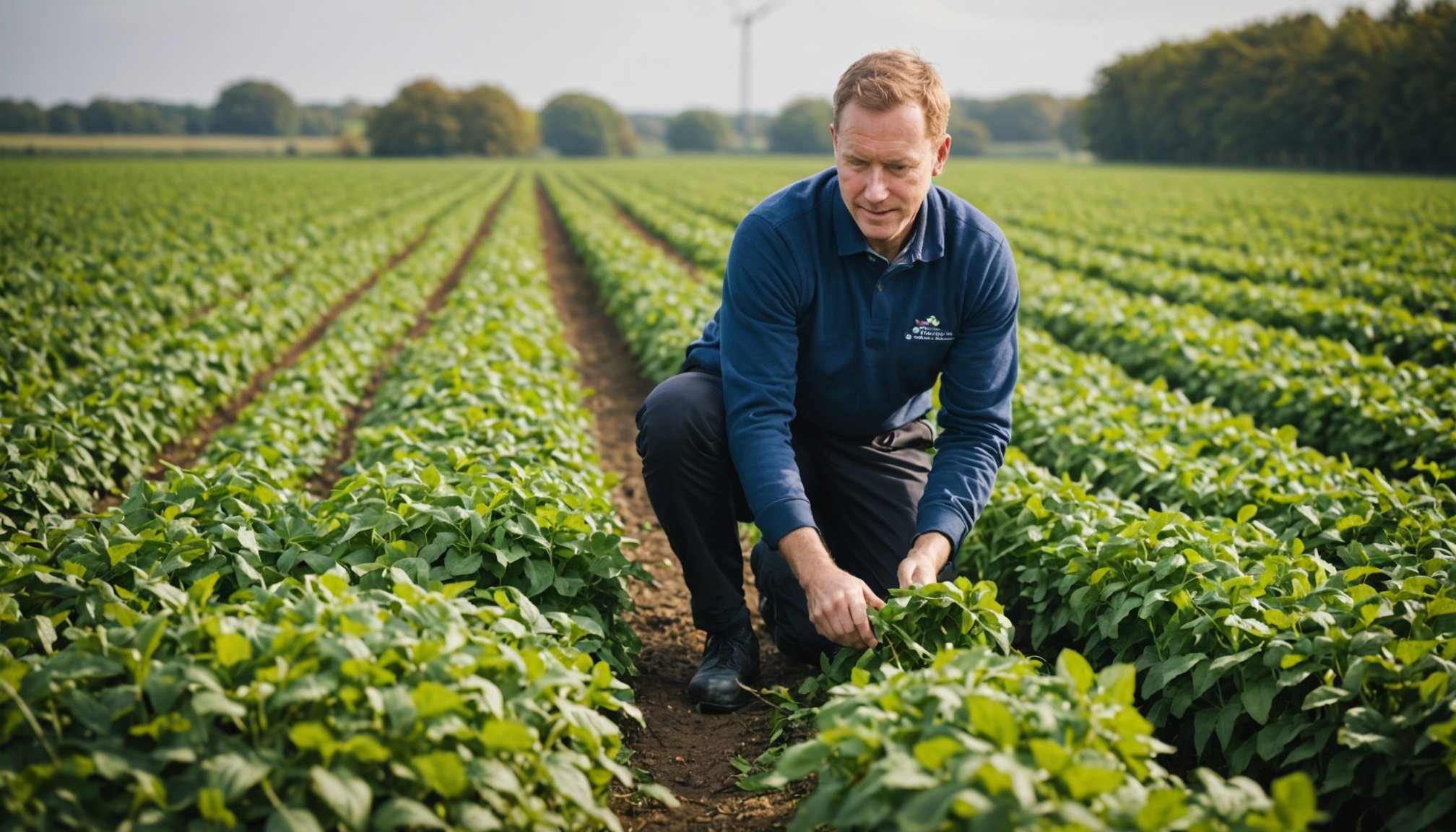Unlocking Sustainability: Essential Strategies for UK Manufacturers to Embrace Eco-Friendly Production
As the world grapples with the challenges of climate change, environmental degradation, and resource depletion, the importance of sustainable manufacturing has never been more paramount. For UK manufacturers, embracing eco-friendly production is not just a moral imperative but also a strategic necessity for long-term business growth and competitiveness. Here, we delve into the essential strategies that UK manufacturers can adopt to unlock sustainability and pave the way for a greener future.
The Imperative of Sustainability in Manufacturing
The manufacturing sector is one of the largest contributors to environmental impact, from energy consumption and carbon emissions to waste generation and resource depletion. However, this sector also holds the key to significant improvements in sustainability.
Have you seen this : Transforming UK Businesses: Essential Steps to Cultivate a Data-Driven Culture
“Innovate UK Business Connect helps drive innovation that can reduce industry’s environmental footprint and improve resource efficiency,” notes the Innovate UK Business Connect initiative, highlighting the critical role of innovation in sustainable manufacturing[1].
To address these challenges, manufacturers must integrate sustainability into their core business practices. This involves a holistic approach that encompasses technology, design, supply chains, business models, and behavior change.
Also read : Transforming UK Businesses: Essential Steps to Cultivate a Data-Driven Culture
Transitioning to Net Zero: A National Priority
The UK has set ambitious targets to achieve net zero carbon emissions by 2050, and manufacturers are at the forefront of this transition. The Decarbonising Ports & Harbours Innovation Network, for example, aims to accelerate the maritime transport sector’s transition to net zero by 2050[1].
Key Strategies for Net Zero:
- Renewable Energy Integration: Transitioning from fossil fuels to renewable energy sources such as wind, solar, and hydroelectric power.
- Energy Efficiency: Implementing energy-efficient technologies and processes to reduce overall energy consumption.
- Carbon Capture and Storage: Investing in carbon capture and storage technologies to mitigate emissions from industrial processes.
- Supply Chain Optimization: Ensuring that supply chains are aligned with net zero goals through sustainable sourcing and logistics.
Embracing Circular Economy Principles
A circular economy is a cornerstone of sustainable manufacturing, focusing on the reuse, recycling, and reduction of waste. The UK fashion industry, for instance, is leading the charge with the Circular Fashion Innovation Network (CFIN), which aims to integrate AI, robotics, and circular business models to boost local sustainable production practices[2].
Circular Economy in Action:
- Design for Recyclability: Products designed with recyclability in mind can significantly reduce waste.
- Closed Loop Manufacturing: Processes that recycle materials back into production, such as Tesla’s Gigafactory and Siemens’ closed-loop systems[4].
- Extended Producer Responsibility (EPR): Regulations that hold manufacturers accountable for the lifecycle of their products, encouraging sustainable design and recycling[2].
Sustainable Supply Chain Management
Sustainable supply chain management is crucial for reducing the environmental impact of manufacturing. This involves sourcing materials from sustainable suppliers, implementing green procurement practices, and ensuring that suppliers adopt regenerative practices.
Sustainable Sourcing Initiatives:
- Traceability and Supply Chain Understanding: Building traceability to understand the origin of raw materials and identifying nature-related risks and impacts[3].
- Supplier Collaboration: Supporting suppliers in understanding and mitigating their environmental impacts through partnerships and training programs[3].
- Green Procurement: Sourcing materials from suppliers that use green and ethical raw materials, such as those certified by LEAF (Linking Environment And Farming)[3].
Reducing Waste and Enhancing Resource Efficiency
Waste reduction and resource efficiency are key components of sustainable manufacturing. The food and drink industry, for example, is working to halve per capita food waste by 2030, contributing to the UN Sustainable Development Goals (SDGs) and the Courtauld 2030 commitment[3].
Waste Management Strategies:
- Process and Production Design: Designing processes to create less waste and implementing recycling of components and materials[4].
- On-Site Recycling and Treatment: Implementing on-site recycling and treatment programs, including waste-to-energy solutions[4].
- Improving Durability Labels: Enhancing product labels to discourage the disposal of good food, reducing household food waste[3].
Leveraging Technology for Sustainable Growth
Technology plays a pivotal role in driving sustainable manufacturing. Innovations such as AI, robotics, and Industry 4.0 technologies are transforming the manufacturing landscape.
Technological Innovations:
- AI and Robotics: Integrating AI and robotics to drive efficiencies, reduce carbon footprints, and eliminate compliance issues associated with overseas production[2].
- Industry 4.0: Adopting technologies associated with Industry 4.0, such as adaptive automation and digital transformation, to enhance resource efficiency and reduce waste[4].
- Recycling Technologies: Utilizing advanced recycling technologies, like UniMelt microwave plasma technology, to convert used materials into reusable components[5].
Policy and Regulatory Support
Government policies and regulatory frameworks are essential for supporting sustainable manufacturing practices. The UK government’s focus on a clearer industrial strategy with advanced manufacturing as a key area is a step in the right direction.
Policy Recommendations:
- Integrated Materials Strategy: Developing an integrated materials strategy to reduce the UK’s reliance on importing scarce materials and promoting recycling and reuse[5].
- Investment in Green Technologies: Increasing public investment in low-carbon technologies to support the transition to a green economy[4].
- Extended Producer Responsibility (EPR): Implementing EPR regulations to hold manufacturers accountable for the lifecycle of their products and drive circular innovation[2].
Case Studies and Success Stories
Several UK manufacturers are already making significant strides in sustainable manufacturing.
Success Stories:
- Innovate UK Business Connect: Supporting the offshore wind industry and the SuperSolar Network Plus to drive innovation in renewable energy[1].
- Circular Fashion Innovation Network: Leading the charge in circular fashion with AI, robotics, and circular business models[2].
- Food and Drink Federation: Implementing sustainable sourcing policies and reducing food waste through cross-supply-chain collaboration[3].
Practical Insights and Actionable Advice
For manufacturers looking to embark on the journey to sustainable production, here are some practical insights and actionable advice:
Actionable Steps:
- Conduct a Sustainability Audit: Assess your current environmental impact and identify areas for improvement.
- Set Clear Goals: Establish clear sustainability goals and targets, such as reducing carbon emissions or waste.
- Invest in Technology: Adopt technologies that enhance resource efficiency and reduce waste.
- Collaborate with Suppliers: Work with suppliers to ensure they adopt sustainable practices.
- Educate Consumers: Communicate sustainable practices to consumers to build trust and loyalty.
Embracing sustainable manufacturing is no longer a choice but a necessity for UK manufacturers. By integrating sustainability into their core business practices, manufacturers can not only reduce their environmental impact but also drive long-term business growth and competitiveness.
As Caroline Rush, CEO of the British Fashion Council, aptly puts it, “Sustainable fashion needs to be aspirational, not just ethical,” highlighting the need for sustainable practices to resonate with consumers and drive market demand[2].
In conclusion, the journey to sustainable manufacturing is complex but rewarding. With the right strategies, technologies, and support, UK manufacturers can unlock a more sustainable future, contributing to a healthier planet and a more resilient economy.
Table: Key Strategies for Sustainable Manufacturing
| Strategy | Description | Benefits |
|---|---|---|
| Net Zero Transition | Transitioning to renewable energy, energy efficiency, and carbon capture | Reduces carbon emissions, aligns with national targets |
| Circular Economy | Designing for recyclability, closed-loop manufacturing, and extended producer responsibility | Reduces waste, promotes recycling and reuse |
| Sustainable Supply Chain Management | Sourcing from sustainable suppliers, green procurement, and supplier collaboration | Reduces environmental impact of supply chains |
| Waste Reduction and Resource Efficiency | Process design to reduce waste, on-site recycling, and waste-to-energy solutions | Enhances resource efficiency, reduces waste |
| Technological Innovations | Adopting AI, robotics, and Industry 4.0 technologies | Drives efficiencies, reduces carbon footprints |
| Policy and Regulatory Support | Integrated materials strategy, investment in green technologies, and EPR regulations | Supports transition to green economy, drives circular innovation |
Detailed Bullet Point List: Implementing Sustainable Manufacturing Practices
-
Conduct a Sustainability Audit:
-
Assess current environmental impact.
-
Identify areas for improvement.
-
Set baseline metrics for future comparisons.
-
Set Clear Goals:
-
Establish specific, measurable, achievable, relevant, and time-bound (SMART) sustainability goals.
-
Align goals with national and international targets (e.g., net zero by 2050).
-
Communicate goals to stakeholders, including employees, suppliers, and consumers.
-
Invest in Technology:
-
Adopt renewable energy sources (wind, solar, hydroelectric).
-
Implement energy-efficient technologies and processes.
-
Utilize AI, robotics, and Industry 4.0 technologies to enhance resource efficiency and reduce waste.
-
Collaborate with Suppliers:
-
Work with suppliers to ensure they adopt sustainable practices.
-
Implement green procurement practices.
-
Support suppliers in understanding and mitigating their environmental impacts.
-
Educate Consumers:
-
Communicate sustainable practices to build trust and loyalty.
-
Highlight the benefits of sustainable products through marketing and labeling.
-
Engage consumers in sustainability initiatives through workshops and feedback mechanisms.
-
Implement Closed Loop Manufacturing:
-
Design products and processes for recyclability.
-
Implement on-site recycling and treatment programs.
-
Use waste-to-energy solutions to maximize resource efficiency.
-
Support Policy and Regulatory Frameworks:
-
Advocate for policies that support sustainable manufacturing (e.g., integrated materials strategy, EPR regulations).
-
Collaborate with government and industry stakeholders to develop supportive regulatory frameworks.
-
Participate in industry-wide initiatives and standards to drive sustainable practices.










